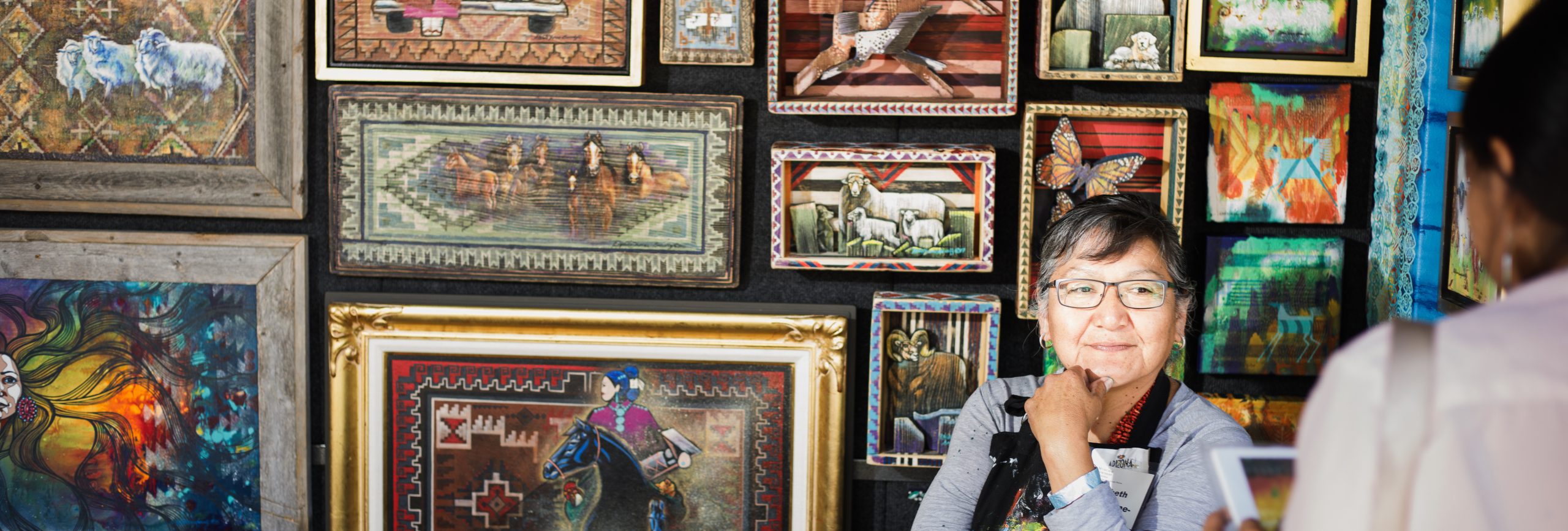
In 2023 the Museum of Northern Arizona and Sedona Arts Center collaborated on a series of panel discussion looking at Appropriation in the Arts. One of the intentions was to create guidelines to help the public better engage with Indigenous cultures and art. On this page you’ll find links to the panel discussions as well as some of the guidelines developed from those talks. You can also download a handy pocket-version of the ABC’s of buying.
ABC’s of Buying Native American Art
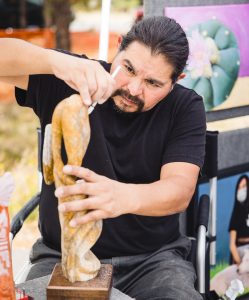 Native American artforms are unique for the intrinsic meaning and distinctive materials and symbols they embody. Buyers of these artworks may be motivated to connect with cultural traditions, put something meaningful in their homes, show their support for Native artists, or as an investment. Purchasing art is a chance to support Native American artists and learn about their culture and craft.
Native American artforms are unique for the intrinsic meaning and distinctive materials and symbols they embody. Buyers of these artworks may be motivated to connect with cultural traditions, put something meaningful in their homes, show their support for Native artists, or as an investment. Purchasing art is a chance to support Native American artists and learn about their culture and craft.
In 1990 the Indian Arts and Crafts Act made it illegal to represent artwork as Native American when it is not, but that did not stop the flood of fakes coming from overseas. Counterfeit Native American artwork continues to be sold at flea markets, souvenir shops, art galleries, and online. This hurts both the artists and the buyers. It makes it difficult for legitimate Native American artists to make a living, and buyers who think they’ve invested in an authentic piece of Native American art are taking home a cheap fake.
Use this guide to purchase authentic Native American art.
Authenticity
Authentic Native American artwork is created by a person who is a member of a federally or officially state-recognized tribe.
Buyer Beware
Watch for warning signs that an item might be counterfeit, such as bargain prices, many nearly identical items, or items being sold by someone who can’t identify the artist. Even when the seller is Native American, the items they are selling may not be completely handmade. For example, “stringer jewelry” is made by assembling prefinished stones bought from craft stores or gem shows. Jewelers who do cut and finish their own stones often display examples of the raw stones and the tools they use.
Connect
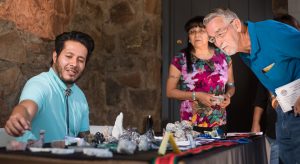 If you feel drawn to a piece of art, build a connection with the artist as well. Ask about their background, where they live, and how their culture and life experiences influence their art. Learning more will deepen your appreciation of the art and create a relationship with the artist. It also allows you to verify the authenticity of the art.
If you feel drawn to a piece of art, build a connection with the artist as well. Ask about their background, where they live, and how their culture and life experiences influence their art. Learning more will deepen your appreciation of the art and create a relationship with the artist. It also allows you to verify the authenticity of the art.
Deal Direct
Unless you previously met an artist in person, it’s difficult to verify an artist’s identity when buying online. Many artists have Social Media accounts, which allow potential buyers to communicate with them via the messaging app. Use a chat feature to ask questions about their background.
Expense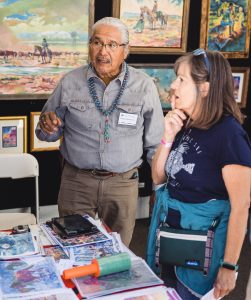
Visit Native American art markets or galleries to get an idea of what authentic artwork costs and be wary of cheaper counterfeits. Crafting authentic artwork takes time. The artist may need to harvest and prepare materials, then work slowly by hand using techniques passed down for generations. This makes the final artwork more valuable and more expensive than mass-produced items. Negotiating the price of artwork with an artist is not appropriate. If you cannot afford an original art piece, some Native American artists sell their artwork as prints, cards, or other items. Buying those allows you to stay within your budget and still support the artist directly.
Festivals
Juried art markets managed by reputable institutions, such as accredited museums, allow you to meet and buy directly from the artists. For these festivals the artists must provide documentation of their tribal status along with photos and descriptions proving their artwork is authentic. Be more careful at flea markets and pow-wows where the artists are not vetted.
Giftshops and galleries
At galleries or giftshops, ask the salesperson for detailed information about the artwork and the artist and get this information in writing on the sales slip. Consider buying Native American artwork at giftshops affiliated with accredited museums.
Hallmark
Native American artists mark their artwork with a unique signature or hallmark. If you don’t see one, it may be a counterfeit, but some counterfeit items use fake hallmarks. Online resources can help you check whether the hallmark is legitimate.
- https://www.medicinemangallery.com/collections/identify-native-american-indian-jewelry-hallmarks
- https://www.medicinemangallery.com/collections/pictorial-hallmarks
- https://www.art-amerindien.com/hallmarks/
Appropriation in the Arts: Centering Authenticity
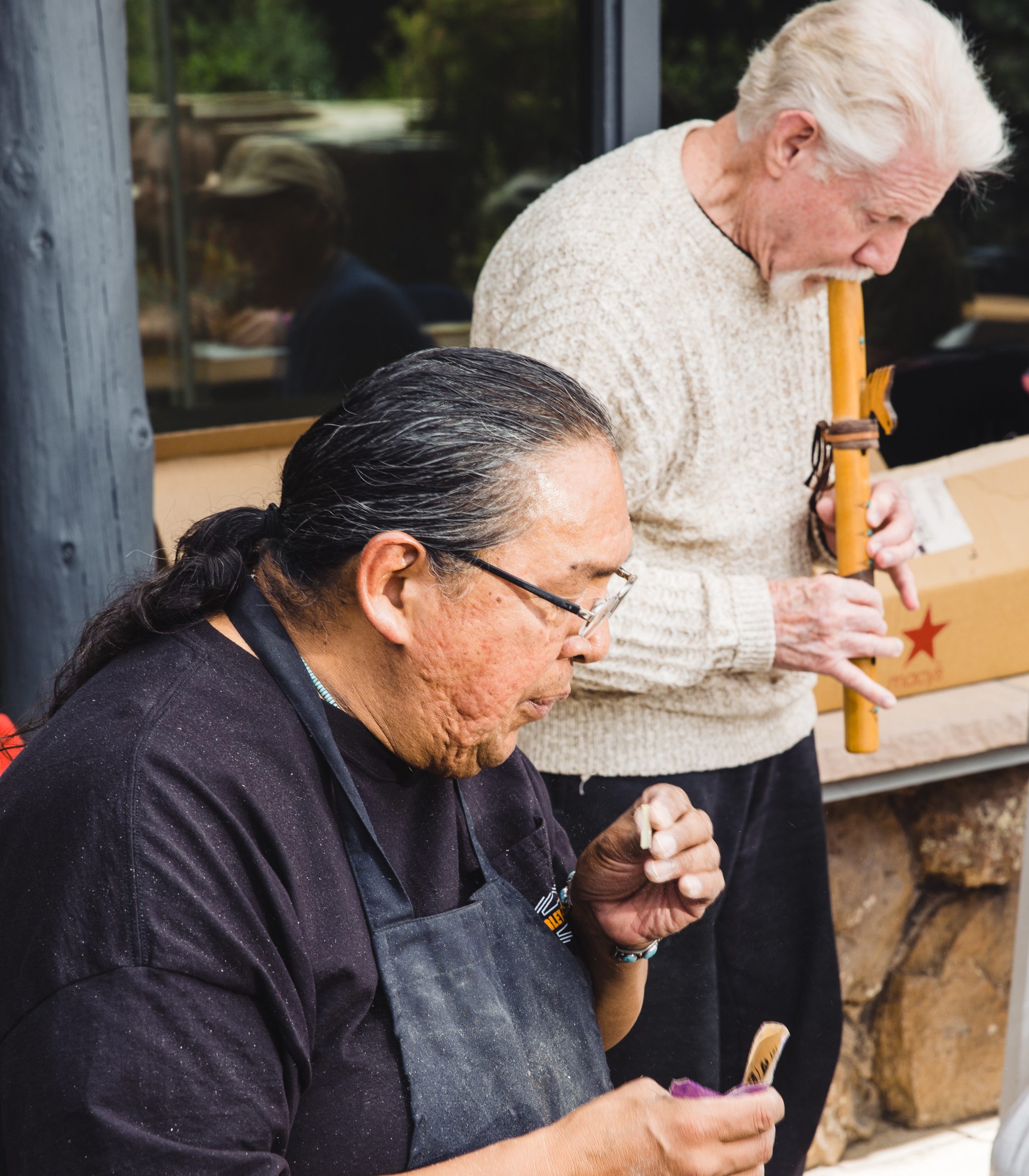
Moving from Appropriation to Authenticity
As the first in a series of panel discussions related to Appropriation in the Arts, this introduced the overarching issues surrounding cultural appropriation of Indigenous art and culture and posed the questions: What is illegal? What is not illegal but still unethical? What are consumers’ responsibilities when considering purchasing art?
Panelists:
Liz Wallace, Diné artist
Mark Bahti, Bahti Indian Arts
Marcus Monenkerit, Heard Museum
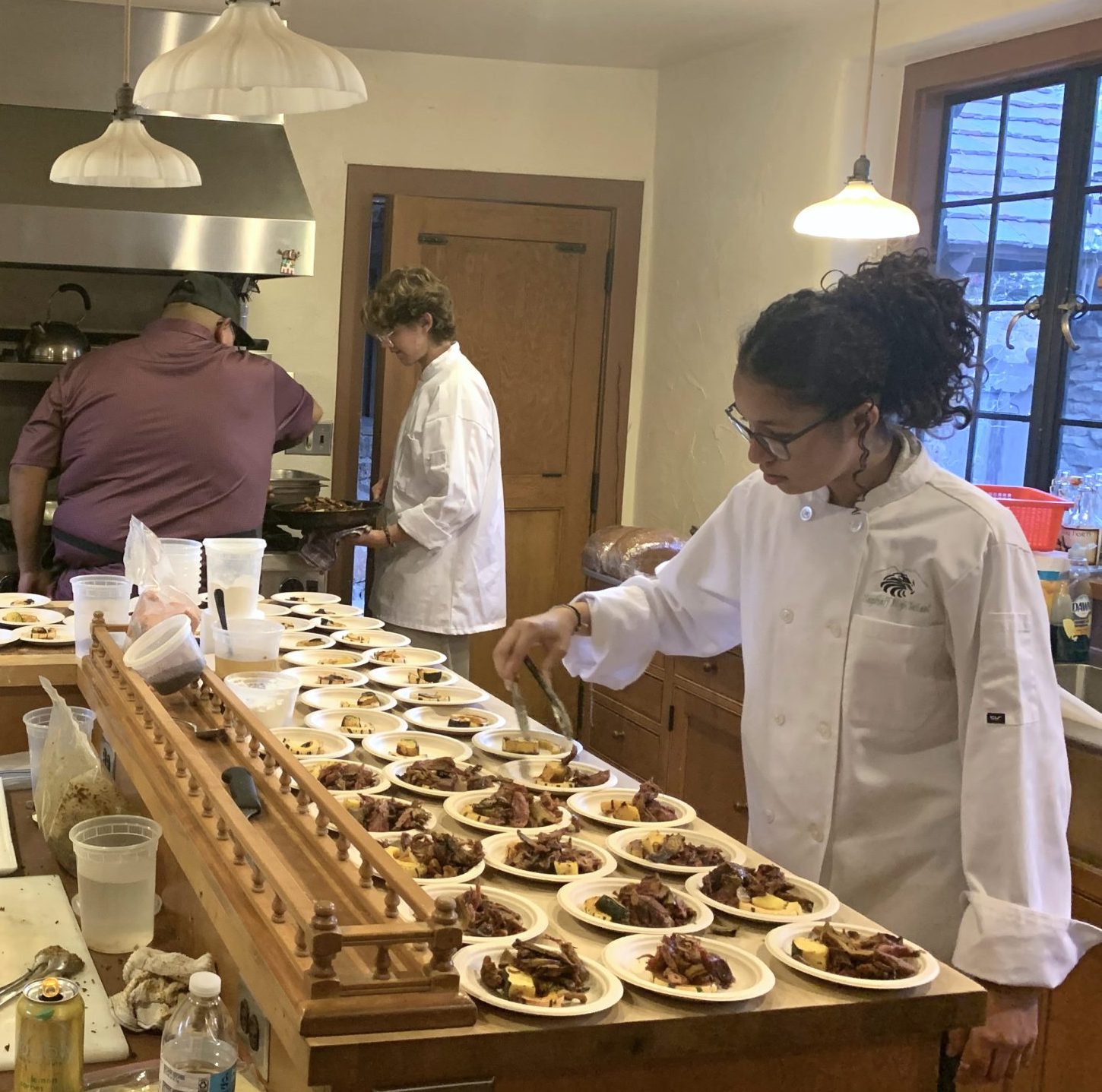
More Than a Meal
The second panel discussion focused on the impacts of colonization on food sovereignty and Indigenous foodways, as well as spotlighting current trends in Indigenous foodways. The panelists addressed questions such as- How does the right to access sacred and traditional foods and food sovereignty affect Indigenous communities’ abilities to thrive? How does colonization’s impact on access to sacred and traditional foods affect other interdependent relationships, such as to harvesting, hunting, and spiritual practices?
Panelists:
Jaren Bates, Diné Chef
Brett Vibber, Chef
Andi Murphy, Toasted Sister podcast (Diné).
Drawing Cultural inspiration
The third panel discussion focused on Indigenous and non-Indigenous artists’ use of cultural symbols, the history of Indigenous representation in art, and the dynamics between the dominant culture and Indigenous artists who rely on their art for financial success. Panelists considered What is Indigenous art? and Who is harmed by the misuse of Native imagery in art?
Panelists:
Jason Garcia, artist (Santa Clara/Tewa)
Antonio Chavarria, Museum of Indian Arts and Culture (Santa Clara)
Susan Kliewer Dolan, artist
